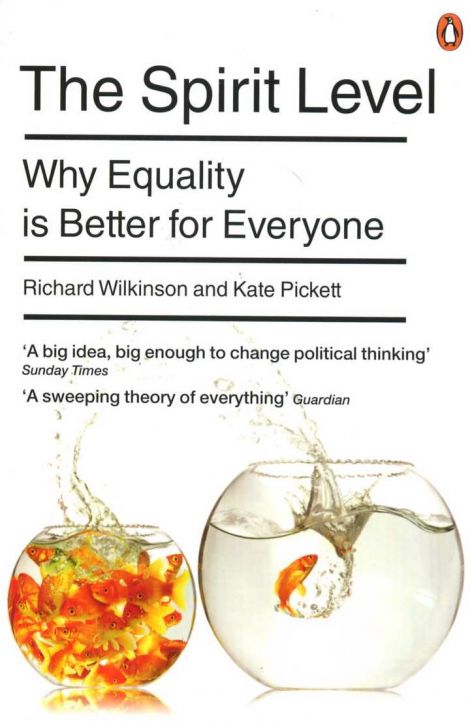News / Benefits levels much too low for living in isles
INEQUALITY is an “inescapable feature of Shetland life”, with UK welfare cuts making life more difficult for the least well-off in society, according to the chairman of a commission set up to tackle inequality within the islands.
Shetland’s Commission on Tackling Inequalities earlier this month published its report, ‘On Da Level – Achieving a Fairer Shetland’, following four evidence-gathering sessions over the course of 2015.
One of its key recommendations is for a lobbying effort making the case for government benefits to be set at a rate that takes into account the added cost of living in remote, windswept islands.
Chairman Alastair Hamilton said that, while Shetland “doesn’t exhibit extreme disparities in wealth, health and other indicators that characterise some communities”, the evidence gathered confirms that “in 2016, inequality is an inescapable feature of Shetland life”.
Impoverished islanders don’t find same ‘sense of solidarity’
Shetland Partnership Board chairman Ian Kinniburgh agrees, saying that while the isles lack the “very visible signs” of inequality in urban areas such as “lavish villas or gentrified terraces not far from run-down tower blocks”, that doesn’t mean disparities do not exist.
Inequality in Shetland is more dispersed, which Kinniburgh feels can leave those in poverty lacking the “sense of solidarity” people living on impoverished city estates may have, instead feeling alienated living in an “otherwise comfortably-off community”.
Research such as Richard Wilkinson and Kate Pickett’s watershed 2009 book ‘The Spirit Level’ have established how “societies that exhibit large income inequalities also tend to score badly in terms of health and a range of social problems”, Kinniburgh points out.
An extensive array of statistics, building on previous research by the SIC’s Emma Perring and Vaila Simpson, reveals divisions within Shetland on lines of gender, geography, income and more besides.
Become a member of Shetland News
One in five isles households has an income of £13,564 or less when the median household income is £28,068.
Most areas have an average household income either side of £25,000 a year, but areas surrounding Lerwick – Tingwall, Whiteness & Weisdale, Gulberwick, Quarff and Cunningsburgh – that rises to between £33,000-£35,000.
Jobseeker’s allowance provides just a seventh of the median wage, while Kinniburgh points out that, for a single person living in a remote island, income support provides just 28 per cent of the income required for an acceptable standard of living.
The upsurge in the use of the Salvation Army’s local foodbank has seen demand more than treble in five years. In 2010 eight food parcels a month were being dished out, but last year that number had risen to 29.
Remote islands within Shetland face added costs
Geographically the disparities between different communities are highlighted: 3,456 people, one in seven of the overall population, lives in what is deemed to be a “fragile” area – Fair Isle, Fetlar, Foula, Papa Stour, Northmavine, Skerries, Unst, Whalsay and Yell.
A staple basket of food costing £10.35 in a Lerwick supermarket was found to cost over £16 in Unst, £17 in Whalsay and almost £20 in Fair Isle.
Meanwhile, with an estimated 43 per cent of households living in fuel poverty (rising to around two thirds for pensioner households), an average bill of £12 a week in an English rural town rises to £23 in a Northern Isles town or £35 a week in a smaller settlement.
That leaves almost half of the population who have rooms unheated and 56 per cent cutting back on essentials such as food and children’s clothes in order to pay for fuel, and some children turning up to school without having had any breakfast.
There remains a marked gender difference in the workplace, with women accounting for 89 per cent of SIC care workers, while all of the local authority’s joiners, marine staff and road workers are men.
Meanwhile it is estimated that at least a third of the 15,000 adults (aged 15-65) in Shetland “experience some form of mental ill health or distress each year”.
UK welfare policies make position ‘more precarious’
“Some of our fellow citizens are struggling,” Hamilton writes in his foreword to the report. “Their circumstances differ, but lack of sufficient money to live a decent life is a common factor.
“The causes of their difficulties are not simple but it’s clear that a variety of influences, including changes in welfare policies, are making their position steadily more precarious.”
He said the sharp divide between rich and poor had “unquestionably become stronger over recent decades” and “we must never forget that the society we create results from political choices among real alternatives”.
Hamilton said it was encouraging to learn that there exists a “powerful commitment to working together in order to tackle disadvantage”, and he hopes some of the commission’s recommendations will lead the way.
The report lays out “where we’d like to be in 2030”, with a wish list including the availability of well-paid employment throughout Shetland; support for low income people to reduce household bills; affordable childcare, and improved access to public transport.
Officials also aspire to embed an understanding from national government that islanders face additional costs for buying many essentials, and to ensure that is reflected in welfare payments and other relevant schemes.
Other aspirations include ensuring technology is used innovatively to reduce inequalities – of which the ongoing battle to ensure better broadband and mobile services are available throughout the isles.
Become a member of Shetland News
Shetland News is asking its many readers to consider paying for membership to get additional features and services: -
- Remove non-local ads;
- Bookmark posts to read later;
- Exclusive curated weekly newsletter;
- Hide membership messages;
- Comments open for discussion.
If you appreciate what we do and feel strongly about impartial local journalism, then please become a member of Shetland News by either making a single payment, or setting up a monthly, quarterly or yearly subscription.






























































